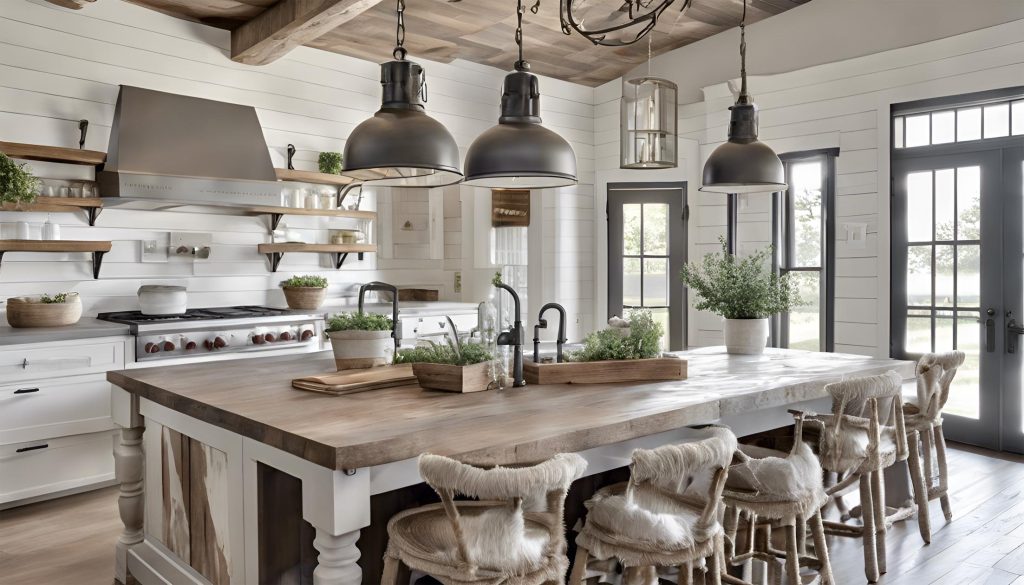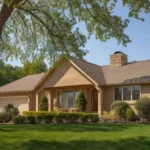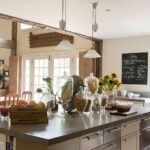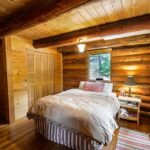Farmhouse style and modern farmhouse are often confused. They share roots but have distinct differences.
Farmhouse style evokes rustic charm, warmth, and simplicity. It features vintage elements, natural materials, and a cozy atmosphere. Modern farmhouse, while inspired by traditional farmhouse design, incorporates contemporary touches. This blend results in a cleaner, more refined look. It emphasizes sleek lines, neutral colors, and minimal clutter.
Understanding these differences can help you choose the best style for your home. Let’s explore how these styles compare and what sets them apart. This will help you make a more informed decision for your décor.
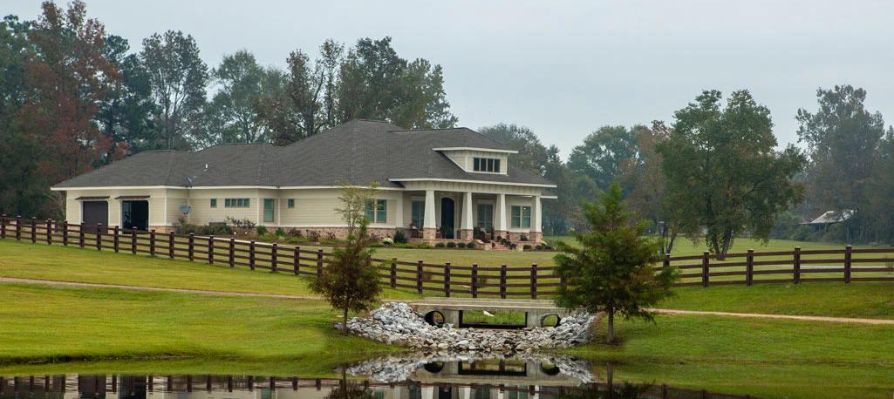
Credit: saterdesign.com
Farmhouse Style Basics
The farmhouse style offers a cozy and rustic feel. It combines elements from traditional rural homes with modern comforts. The result is a warm and inviting atmosphere.
People love it for its simplicity and connection to nature. This style often includes reclaimed wood, vintage decor, and functional pieces. It’s all about creating a lived-in, welcoming space.
Origins And History
The farmhouse style has roots in the rural homes of early America. Farmers built their homes using materials found on their land. This led to the use of wood, stone, and other natural elements.
These homes were practical and simple. They focused on function over form. Over time, the style evolved but retained its rustic charm. Today, it blends the old with the new, creating a timeless look.
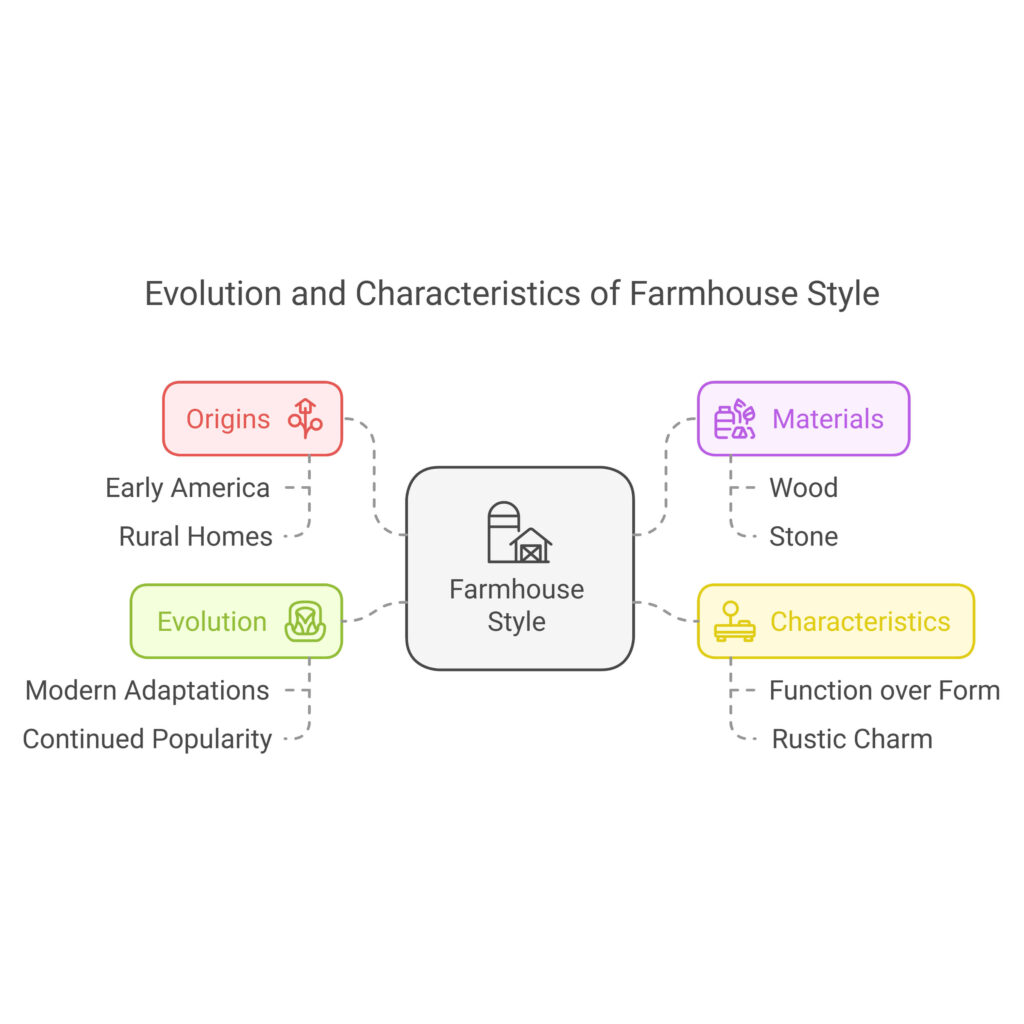
Key Characteristics
The farmhouse style features natural materials and neutral colors. Wood is a major element, often seen in floors, furniture, and beams. Stone and metal also play a role, adding texture and interest.
Vintage items and antiques are common in farmhouse decor. These pieces bring history and character into the home. They are often paired with modern elements for a balanced look.
Open spaces and large windows are another hallmark. They allow natural light to flood the rooms, creating a bright and airy feel. The overall goal is to create a comfortable, lived-in space.

Credit: www.angi.com
Modern Farmhouse Essentials
Modern Farmhouse Essentials blend rustic charm with contemporary sophistication. This hybrid style has surged in popularity, offering a cozy yet updated look. By understanding the key elements, you can create a home that feels both timeless and fresh.
Evolution And Influences
The modern farmhouse style has evolved from traditional farmhouses. It combines rustic elements with modern touches. This style draws on the simplicity of country living. It also incorporates clean lines and minimalistic decor from modern design.
Influences come from various sources. Traditional farmhouses, Scandinavian design, and industrial trends all play a part. These influences create a unique blend of old and new.
Defining Features
Several features define the modern farmhouse style. These include:
- Neutral Color Palette: Whites, grays, and beiges dominate.
- Natural Materials: Wood, stone, and metal are key elements.
- Simplicity: Clean lines and uncluttered spaces.
- Functional Decor: Items that are both beautiful and useful.
Modern farmhouses also use open floor plans. This creates a sense of space and light. Large windows and high ceilings are common. They bring the outdoors in and enhance the airy feel.
Furnishings mix vintage pieces with contemporary ones. Think reclaimed wood tables paired with sleek metal chairs. This contrast adds visual interest and depth.
Shiplap walls and barn doors are popular features. They add a rustic touch without overwhelming the space. These elements provide texture and character.
Table Of Modern Farmhouse Vs. Traditional Farmhouse
| Feature | Modern Farmhouse | Traditional Farmhouse |
|---|---|---|
| Color Palette | Neutral and muted | Warm and cozy |
| Materials | Mix of natural and industrial | Primarily natural |
| Decor | Minimal and functional | Ornate and detailed |
| Layout | Open and airy | Cozy and segmented |
Color Palettes
The color palette is a key element that distinguishes Farmhouse Style from Modern Farmhouse. While both styles embrace simplicity and comfort, they achieve this through different hues and tones. Let’s explore how their color choices set them apart.
Traditional Farmhouse Colors
Traditional farmhouse style leans towards warm, earthy colors. These colors evoke a sense of nostalgia and coziness. Natural tones dominate the palette, including shades of beige, cream, and brown.
White is a staple, often used for walls and ceilings. It creates a clean canvas that highlights rustic elements. Muted greens and soft blues add subtle pops of color. These hues reflect the natural surroundings of a farmhouse.
The overall look is timeless and inviting. It feels like a warm hug from the past.
Modern Farmhouse Tones
Modern farmhouse style incorporates a more refined and neutral palette. The focus is on blending traditional charm with modern simplicity. Grays and whites take center stage, creating a sleek and polished look.
Black accents are common, adding contrast and depth. These can be seen in light fixtures, hardware, and furniture. Soft neutrals like taupe and greige are also popular. They provide a sophisticated backdrop for modern elements.
This style often includes bold pops of color, such as navy blue or emerald green. These colors add a fresh, contemporary twist. The result is a harmonious blend of old and new.
The modern farmhouse palette feels calm and serene, yet stylish and updated.
| Traditional Farmhouse | Modern Farmhouse |
|---|---|
| Warm, earthy tones | Neutral, refined palette |
| Beige, cream, brown | Gray, white, black |
| Muted greens, soft blues | Bold pops of color |
Furniture And Decor
When it comes to home design, the furniture and decor choices set the tone. Farmhouse style and modern farmhouse both embrace warmth and simplicity. Yet, their furniture and decor have distinct characteristics.
Classic Farmhouse Pieces
Classic farmhouse style draws from rural life. Think of large wooden dining tables. They often have a distressed finish. Worn-out dressers and cabinets add charm. Upholstered furniture features simple, durable fabrics. Patterns like florals and checks are common. Colors are muted and earthy. Whites, creams, and soft pastels dominate. Accessories include vintage signs and mason jars. Handmade quilts and braided rugs complete the look.
Modern Farmhouse Updates
Modern farmhouse style blends rustic charm with sleek design. Furniture pieces are more refined. Clean lines and minimal distressing are key. Upholstery is often in neutral tones. Think of grays, whites, and blacks. Metal and wood combinations are popular. Light fixtures have an industrial touch. Modern decor includes abstract art and geometric patterns. Greenery in simple pots adds life. The color palette is crisp and clean. White walls with black accents create a striking contrast.
Materials And Textures
Both Farmhouse Style and Modern Farmhouse designs have unique materials and textures. The materials used create the look and feel of each style. The choice of textures also plays a big part in defining the design. Here, we will look at the key differences in materials and textures in both styles.
Farmhouse Material Choices
Farmhouse style uses natural and rustic materials. Wood is a key material in traditional farmhouse interiors. It often has a weathered or reclaimed look. Stone and brick are also common. These materials bring warmth and a sense of history.
Textiles in farmhouse style are simple and durable. Cotton and linen are popular choices. Plaid and gingham patterns add a touch of country charm. The focus is on comfort and simplicity.
Here’s a table to summarize the main materials used:
| Material | Characteristics |
|---|---|
| Wood | Weathered, Reclaimed |
| Stone | Natural, Rough |
| Brick | Exposed, Aged |
| Cotton | Soft, Durable |
| Linen | Simple, Comfortable |
Modern Farmhouse Innovations
Modern farmhouse style combines rustic charm with sleek, modern elements. Industrial materials like steel and iron are often used. These materials bring a contemporary edge.
Shiplap walls are a signature of modern farmhouse interiors. They add texture and a clean, crisp look. Concrete is another material that brings a modern twist. Polished concrete floors are both stylish and durable.
Textiles in modern farmhouse designs mix old and new. Woven rugs and throws add warmth. Leather and suede bring a touch of luxury.
Here’s a table to highlight the main materials used:
| Material | Characteristics |
|---|---|
| Steel | Industrial, Sleek |
| Iron | Strong, Modern |
| Shiplap | Clean, Textured |
| Concrete | Polished, Durable |
| Leather | Luxurious, Warm |
Both styles use materials that reflect their unique charm. The choice of textures enhances the overall feel of the space.
Architectural Elements
Architectural elements play a crucial role in defining different home styles. The farmhouse style and modern farmhouse design both bring unique elements. These elements create distinct looks and feelings. Let’s dive into what sets these two styles apart.
Farmhouse Architectural Style
Traditional farmhouse architecture includes practical and simple designs. Homes feature pitched roofs, large front porches, and symmetrical windows. These elements reflect their agricultural roots. The use of natural materials like wood and stone is common. This style often showcases exposed beams and wide plank floors.
Farmhouses typically have large kitchens with open shelves. The layout is functional with rooms serving specific purposes. The design focuses on creating a warm, welcoming atmosphere. Many farmhouses use neutral colors and rustic decor. These elements add to the home’s charm and character.
Modern Farmhouse Design
Modern farmhouse design blends traditional and contemporary styles. This design retains classic elements but adds modern touches. Clean lines and minimalistic features are key. It often includes large windows and open floor plans.
In modern farmhouses, you find a mix of materials. Reclaimed wood pairs with industrial metals. This mix creates a balance of old and new. Modern designs use a neutral color palette. They also incorporate sleek finishes and modern fixtures.
While both styles value comfort, modern farmhouses focus on functionality. They include smart home technology and energy-efficient systems. The aim is to create a cozy yet modern living space.
Interior Layouts
Understanding the nuances between farmhouse style and modern farmhouse starts with their interior layouts. Both styles have unique characteristics that define their essence. Let’s delve deeper into the traditional farmhouse layout and the modern farmhouse layout.
Traditional Farmhouse Layout
Traditional farmhouses have a straightforward and practical layout. Rooms are often separate and closed off. This design makes each room feel cozy and intimate. Hallways connect the rooms, providing privacy and separation. The kitchen is usually the heart of the home. It is spacious, with plenty of room for cooking and gathering. The living areas are designed for comfort and family time. Bedrooms are simple, often with minimal furniture.
Modern Farmhouse Layout
Modern farmhouses embrace open floor plans. This layout creates a sense of space and connectivity. Rooms flow seamlessly into each other, enhancing the home’s airy feel. The kitchen, dining, and living areas are often combined. This design fosters interaction and communal living. Modern farmhouses use large windows to bring in natural light. Bedrooms remain private but are designed with modern amenities. Bathrooms are often more luxurious, blending style and function.
Combining Styles
Combining styles can create a unique and personalized space. Blending farmhouse and modern elements allows you to enjoy the charm of the old with the sleekness of the new. It’s about finding a balance that suits your taste and lifestyle. This approach brings warmth and contemporary design together harmoniously.
Blending Farmhouse And Modern
Blending farmhouse and modern styles involves merging rustic elements with clean lines. The farmhouse style is known for its natural textures and cozy feel. Modern design, on the other hand, emphasizes simplicity and function. Combining them can create a balanced look that’s both inviting and fresh.
Consider incorporating reclaimed wood alongside modern furnishings. A wooden dining table with sleek, metal chairs can offer a perfect blend. Integrate industrial lighting fixtures to add a modern touch to your rustic decor.
Tips For Seamless Integration
To achieve a seamless integration, focus on the following tips:
- Neutral Color Palette: Use whites, grays, and beiges as your base. These colors work well in both farmhouse and modern designs.
- Mix Textures: Combine rough and smooth textures. For example, pair a soft linen sofa with a metal coffee table.
- Statement Pieces: Incorporate standout elements, like a vintage barn door or a sleek modern lamp.
- Functional Decor: Choose decor that serves a purpose. Think of open shelving made from reclaimed wood.
- Simplicity: Keep spaces uncluttered. Let your key pieces shine without too many accessories.
By following these tips, you can create a space that feels both cozy and contemporary. The goal is to combine the best of both worlds in a balanced way.
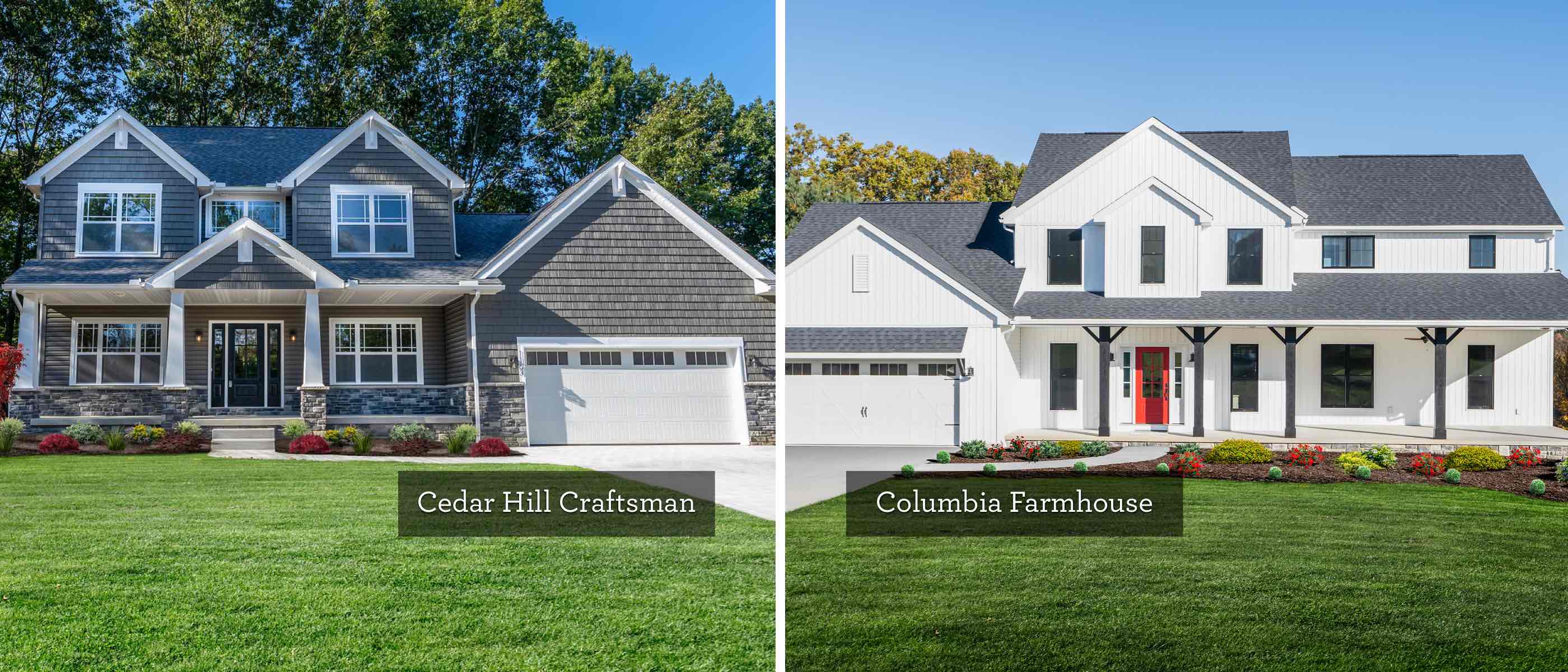
Credit: waynehomes.com
Frequently Asked Questions
What Defines Farmhouse Style Decor?
Farmhouse Style decor emphasizes rustic charm and simplicity. It features natural materials, vintage elements, and a cozy, lived-in feel. This style often incorporates wood, metal, and neutral colors, creating a warm and inviting space.
How Is Modern Farmhouse Different?
Modern Farmhouse combines traditional farmhouse elements with contemporary design. It features clean lines, sleek finishes, and minimalistic decor. This style blends rustic charm with modern sophistication, creating a balanced and stylish look.
What Colors Are Common In Farmhouse Style?
Farmhouse Style typically uses neutral colors. Common shades include white, beige, and soft grays. These colors create a calming and inviting atmosphere, perfect for a cozy home.
Is Modern Farmhouse More Minimalistic?
Yes, Modern Farmhouse is more minimalistic. It focuses on clean lines and uncluttered spaces. This style aims to create a streamlined and sophisticated look, blending rustic elements with modern design.
Conclusion
Farmhouse style showcases rustic charm and vintage elements. Modern farmhouse blends contemporary touches with classic farmhouse features. Both styles offer warmth and comfort. Modern farmhouse adds a sleek, updated feel. Choosing between them depends on personal taste. Want cozy and traditional?
Go for farmhouse style. Prefer a mix of old and new? Modern farmhouse might be your choice. Both styles create inviting, beautiful homes. Consider your preferences and lifestyle. Make your home reflect your unique style.

Sarah Bennett is a passionate home decor enthusiast and the creative mind behind ConsumerDecor. With a love for design and an eye for detail, she shares inspiring ideas, emerging trends, and practical tips to help readers create beautiful, functional living spaces. Sarah believes that every home deserves a touch of style, no matter the budget.

